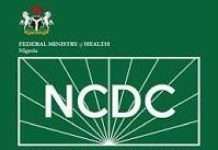I often say it, whenever I have the opportunity, that except there is vaccination or injection against deception, the only mitigation or one of the options we have is availing ourselves of nonverbal intelligence. Why? Because over 90 per cent of communication is done nonverbally, according Albert Mehrabian a professor of psychology. Therefore, we need to go beyond verbals, if we must effectively decipher falsehood or deception or, to further stretch it, understand people at a deep level.
In this edition, we shall be looking at a body of knowledge under the canopy of nonverbal intelligence that seeks to profer solution, especially to those who have been victims of deception in document-related matters. If you have ever been swindled by fraudsters through forgery, fake cheques, anonymous letters, disguise etc, then you need to pay attention to this column in the subsequent editions.
My discussion shall be on Forensic Document Examination (FDE) and the objective is not to make the readership forensic experts but to arm anyone with basic knowledge on how to guard against falling into the trap of document fraudsters. This prevents loss of lives and properties.
Definition
Forensic Document Examination, also known as Questioned Document Examination, “involves the evaluation and analysis of various types of documentation for the purpose of detecting forgery, identifying writers and proving or disproving document authenticity or origin”, according Reed Hayes.
The difference between a handwriting analyst and a forensic document expert is that the former evaluates handwriting for the purpose of determining personality, while the latter works with an unknown writing, with the intent of proving authorship or establishing identity. We cannot overemphasise the importance of this body of knowledge in organisations and as a salient tool in national development.
Essential facts
For us to appreciate the value of document examination, there are a few cardinal concepts we need to understand as follows:
No two handwritings are the same. Even if the writings were from the same individual in multiple times, none would be exactly the same as the other. There may be similarities, quite alright; but the moment you observe a writing or signature, for example, looking exactly alike with another from a known or unknown source, it’s a clear sign of fakery.
Regardless of how an individual attempts to forge or doctor a letter or signature, the master pattern (the unique peculiarities in the individuals’ writing or the writing habit) would eventually reveal the authorship of the questioned document. In other words, by the time a professional document examiner evaluates the questioned document and exemplars, the truth is eventually revealed.
The handwriting of an individual can be influenced by several factors such as writing instrument, writing position, age, drugs, injury, mental health status.
The writing of an individual always has some degree of natural variation which prevents writing from being mechanically exact.
When someone attempts to imitate another’s signature or writing, the imitator must eliminate many personal writing characteristics
When a writing has been imitated (simulated) it will bear similarities to the model that is being copied
To prove that two writings were not produced by the same person, fundamental disparities must exist between them which cannot be accounted for by coincidence, accident, disguise, psychological influence or physiological factors.
Instagram (@dipomacjob) (07062456737 Text message)










